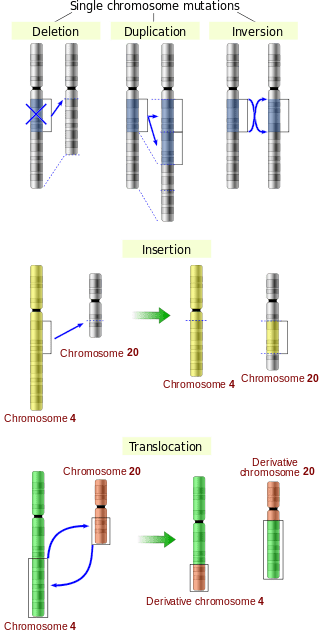Difference Between DNA Sequence Mutations and Epigenetic Modifications
Table of Contents
The key difference between DNA sequence mutations and epigenetic modifications is that during DNA sequence mutations, changes occur in the original DNA sequences while during epigenetic modifications, changes do not occur in the original DNA sequences.
The genome represents the overall genetic information of an organism in the form of precise DNA sequences or genes. A particular gene contains a particular genetic code to produce a specific protein. Hence, genes are expressed via two processes: transcription and translation. However, due to various reasons, changes occur in DNA sequences of the genes. We call these kinds of alterations in nucleotides sequences mutations. Some times, even without changing the original DNA sequences of the genes, gene expression changes and produces different phenotypes. We call these instances epigenetic modifications.
CONTENTS
1. Overview and Key Difference
2. What are DNA Sequence Mutations
3. What are Epigenetic Modifications
4. Similarities Between DNA Sequence Mutations and Epigenetic Modifications
5. Side by Side Comparison – DNA Sequence Mutations vs Epigenetic Modifications in Tabular Form
6. Summary
What are DNA Sequence Mutations?
Mutations are the changes that occur in the nucleotide sequences of DNA. When a mutation occurs, it alters the precise nucleotide order of the DNA sequence. As a result, genetic information changes within a particular sequence. A single nucleotide change can create a deleterious effect on an organism; for example, genetic disorders. However, some times, it does not pose a threat. If the mutation occurs in an exon region of a gene, it can result in a wrong protein. Furthermore, germline mutations result in genetic disorders when they pass to the next generation since they occur in sex cells such as sperms and eggs. However, most other mutations are noninheritable.

Figure 01: DNA Sequence Mutations
DNA sequence mutations take place as a result of exposure to strong chemicals and carcinogens, UV light, errors in the DNA replication process, exposure to radiations, etc. Apart from that, some mutations are spontaneous. Mutations can be point mutations or chromosomal mutations. Single nucleotide changes or point mutations happen due to insertions, deletions, and substitutions. On the other hand, mutations that cause structural changes of chromosomes happen due to gene duplications, deletions of chromosomal parts, chromosomal rearrangements, etc.
What are Epigenetic Modifications?
Epigenetics is the study of heritable changes of the gene expression without changing the original DNA sequence. Hence, phenotypes get changed without changing the genotypes in epigenetics. This clearly tells that there are certain factors that control gene expressions and phenotypes in addition to their DNA sequences. These are the epigenetic modifications. These epigenetic modifications play an important role in gene expression and regulation and they play a major role in cellular processes such as differentiation, development, and tumorigenesis.

Figure 02: Epigenetic Modifications
Some epigenetic modifications are DNA methylation, histone modification, and microRNA-mediated genetic silencing. During DNA methylation, the addition of methyl or hydroxymethyl group to bases of the DNA sequence occurs. Histones are proteins that make chromatin fibers. Modifications of histone lead to structural changes in chromatin and changes in the gene expression. The specialty of the epigenetic modifications is that it influences the gene expression without harming the DNA sequence of the gene. However, epigenetic modifications are reversible.
What are the Similarities Between DNA Sequence Mutations and Epigenetic Modifications?
- DNA sequence mutations and epigenetic modifications are related to genes.
- Both are able to change the phenotype.
- They cause heritable changes in organisms.
What is the Difference Between DNA Sequence Mutations and Epigenetic Modifications?
DNA sequence mutations are the permanent changes that occur in the DNA sequences of the genome. On the other hand, epigenetic modifications are the heritable changes of chemical and physical nature of the chromatin that can alter gene expression. This is the key difference between DNA sequence mutations and epigenetic modifications. Furthermore, DNA sequence mutations can be inherited as well as non-inherited. On the other hand, epigenetic modifications are heritable changes. This is also a significant difference between DNA sequence mutations and epigenetic modifications.
Moreover, DNA sequence mutations cause changes in genetic information while epigenetic modifications do not cause changes in the genetic information. More importantly, DNA sequence mutations change the original nucleotide sequence of the DNA while epigenetic modifications do not change the original DNA sequence of the gene. This is another difference between DNA sequence mutations and epigenetic modifications. Furthermore, there are three main types of DNA sequence mutations as point mutations, frameshift mutations, and chromosomal mutations. On the other hand, there are three types of epigenetic modifications as DNA methylation, histone modification, and microRNA-mediated genetic silencing.
Below infographic on the difference between DNA sequence mutations and epigenetic modifications tabulates all the differences comparatively.

Summary – DNA Sequence Mutations vs Epigenetic Modifications
DNA sequence mutations and epigenetic modifications are two types of changes that occur in genes. In DNA sequence mutations, the precise nucleotide sequence alters permanently while in epigenetic modifications, the original DNA sequence does not change. However, epigenetic modifications cause changes in gene expression, thereby creating changes in the phenotypes. Furthermore, epigenetic modifications are reversible, unlike DNA sequence mutations. In addition, all epigenetic modifications are heritable, unlike DNA sequence mutations. This is a summary of the difference between DNA sequence mutations and epigenetic modifications.
Reference:
1. “Genetic Mutation.” Nature News, Nature Publishing Group, Available here.
2. “Epigenetic Modification.” NeuroImage, Academic Press, Available here.
Image Courtesy:
1. “Chromosomes mutations-en” By GYassineMrabetTalk✉This W3C-unspecified vector image was created with Inkscape. – Own work based on Chromosomenmutationen.png (Public Domain) via Commons Wikimedia
2. “HDACs’ role” By Sm978 – Own work (CC BY-SA 3.0) via Commons Wikimedia
ncG1vNJzZmivp6x7pbXFn5yrnZ6YsqOx07CcnqZemLyue8OinZ%2Bdopq7pLGMm5ytr5Wau26wzZpkrJ2hqrKvr8RmpK6skam2sLrSZpinnF2avaqzxKecraGTYrqwsMifoJyZpJ68r7%2BO